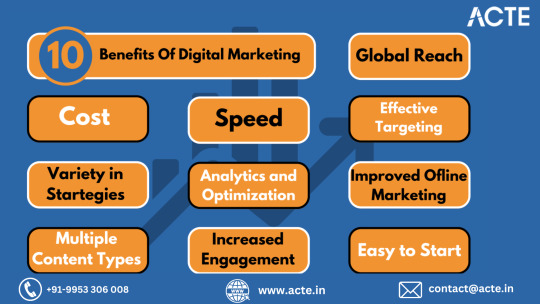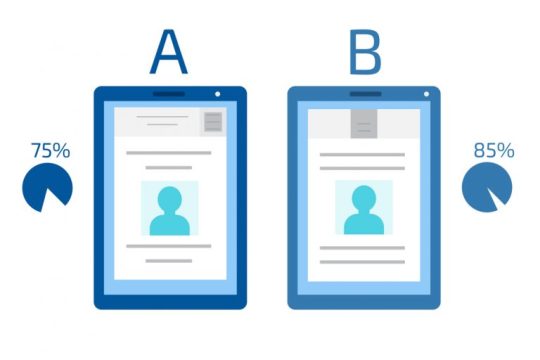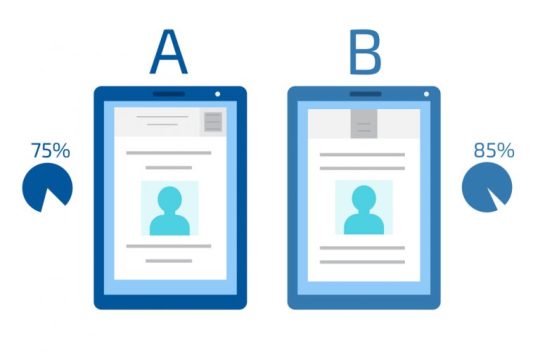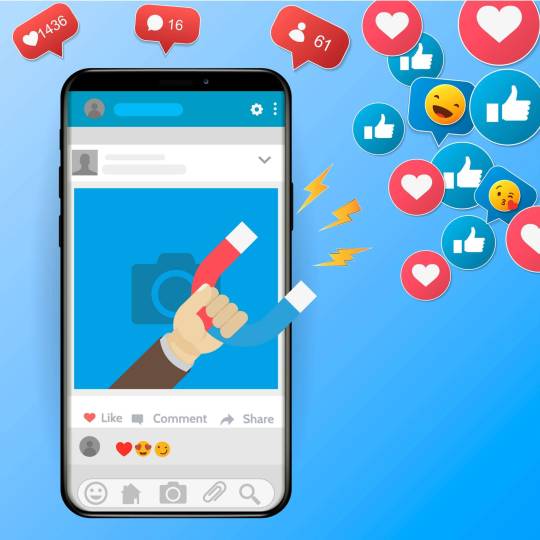#Sales funnel metrics
Text
Get your $500 Google ads Credit to promote your business

Get your $500 Google ads Credit to promote your business
#Online advertising#Digital marketing#Paid ads#Google Ads#Facebook Ads#Tumblr marketing#Advertising strategies#Audience targeting#Keywords#Ad campaigns#Ad optimization#Retargeting#Ad conversions#Native ads#CTR (Click-Through Rate)#CPC (Cost per Click)#CPM (Cost per Thousand Impressions)#Ad impressions#Sales funnel#Performance metrics#Results analysis#Brand exposure#A/B testing#Video ads#Remarketing#Display ads#Text ads#Landing pages#Geolocation#Engagement metrics
1 note
·
View note
Text
Winning Customers: Tactics For Small Business Sales Growth
Winning Customers: Tactics For Small Business Sales Growth
Small business owners often face challenges in attracting and retaining customers, especially when competing against larger companies with greater resources. However, effective sales strategies can help these entrepreneurs build relationships with their target audience and achieve sustainable growth over time.
In this article, we will…

View On WordPress
#Common small business sales mistakes: lack of research#Creating Niches#customer profiling#customer segmentation#Developing consistency#Email etiquette#Establishing emotional connections#influencer marketing campaigns#market research#networking events#Performance metrics analysis#Performance metrics tracking#personalization#Phone call scripts#poor customer service#Sales funnel optimization#Sales growth tracking#Sales team motivation#Social media algorithms#Tailored communication#understanding pain points#Unique Selling Propositions
0 notes
Text
How Tradekey's Targeted Email Marketing Drives Global Sales
In the ever-crowded world of digital marketing, email remains a powerful tool for reaching and engaging customers. But with inboxes overflowing, generic blasts get ignored. Tradekey steps in with targeted email marketing services designed to help businesses connect with the right audience, globally, and convert interest into sales.
Laser-Focused Targeting for Maximum Impact:
Tradekey doesn't believe in a shotgun approach. They leverage the vast amount of user data on their platform to create highly targeted email lists. This means your emails reach potential buyers who are genuinely interested in what you offer, regardless of their location. Gone are the days of irrelevant emails cluttering inboxes; targeted campaigns generate higher open rates and click-through rates, leading to more qualified leads.
Compelling Content that Converts:
A successful email campaign goes beyond just a list. Tradekey's team crafts engaging email content tailored to your specific audience and goals. This could include product announcements, industry insights, promotional offers, or personalized recommendations. They also optimize email design for different devices, ensuring your message is delivered effectively across desktops, tablets, and mobile phones.
Automated Workflows for Increased Efficiency:
Managing email campaigns can be time-consuming. Tradekey simplifies the process with automated workflows. These allow you to create triggered emails based on user behavior, such as welcome emails for new subscribers or abandoned cart reminders. This ensures timely engagement and nurtures leads through the sales funnel.
Data-Driven Optimization for Continuous Improvement:
Tradekey doesn't just send emails; they analyze their impact. Detailed reports track key metrics like open rates, click-through rates, and conversion rates. This data allows Tradekey to refine your campaigns, optimize email subject lines, and personalize content for even better results over time.
Integration with Your Tradekey Storefront:
Seamless integration is key. Tradekey ensures your email marketing efforts connect directly with your Tradekey storefront. With a single click, interested prospects can visit your store and explore your products, making the conversion process smooth and efficient.
By leveraging Tradekey's targeted email marketing services, businesses can forge meaningful connections with potential customers around the world. This translates into increased brand awareness, stronger leads, and ultimately, a boost in global sales.
2 notes
·
View notes
Text
Getting Around in the World of Digital Marketing: A Comprehensive Guide
Introduction:
In today's rapidly evolving digital landscape, businesses are increasingly turning to digital marketing strategies to connect with their audience, drive growth, and stay ahead of the competition. This comprehensive guide provides an in-depth exploration of digital marketing, covering its various uses, strategies, and best practices.

Understanding Digital Marketing:
Digital marketing encompasses a broad range of online strategies and tactics aimed at promoting products, services, and brands through digital channels. From search engine optimization (SEO) and social media marketing to email campaigns and content marketing, digital marketing offers businesses diverse avenues to engage with their target audience and achieve their marketing objectives.
Exploring the Uses of Digital Marketing:
Enhanced Brand Visibility: Digital marketing helps businesses boost their online presence and visibility, ensuring that their brand remains prominent and memorable among consumers in a crowded digital space.
Driving Website Traffic: By optimizing their websites for search engines and utilizing paid advertising channels, businesses can attract qualified traffic to their sites, increasing the chances of conversions and sales.
Lead Generation and Conversion: Digital marketing tactics such as email marketing, social media advertising, and content marketing are instrumental in capturing leads and nurturing them through the sales funnel, ultimately driving conversions and revenue.
Building Customer Relationships: Digital marketing allows businesses to engage with their audience on a more personal level, fostering relationships and loyalty through targeted communication and customized messaging.
Measuring Performance: One of the key advantages of digital marketing is the ability to track and measure campaign performance in real-time, enabling businesses to refine their strategies and optimize their marketing efforts for better results.

Deciphering the Mechanics of Digital Marketing:
Digital marketing operates on the principle of leveraging digital channels and technologies to connect with target audiences, deliver tailored messages, and prompt desired actions. Here's a breakdown of how it works:
Objective Identification: Businesses start by defining their marketing objectives and identifying their target audience, including demographics, interests, and preferences.
Strategic Planning: Based on their objectives and audience insights, businesses develop a comprehensive digital marketing strategy that outlines the tactics and channels they will use to achieve their goals.
Content Creation: Content is the cornerstone of digital marketing. Businesses create engaging and relevant content, such as blog posts, social media updates, videos, and infographics, to resonate with their audience and drive action.
Channel Deployment: Businesses deploy a mix of digital channels, including websites, social media platforms, email, search engines, and online advertising networks, to distribute their content and reach their target audience effectively.
Lead Engagement: Through targeted messaging and personalized communication, businesses engage with their audience, nurture leads, and guide them through the sales funnel towards conversion.
Performance Analysis: Digital marketers continuously monitor and analyze campaign performance metrics, such as website traffic, conversion rates, click-through rates, and engagement metrics. Based on these insights, they refine their strategies and optimize their campaigns for better results.
Conclusion:
Digital marketing has emerged as a fundamental component of modern business strategy, offering unparalleled opportunities for growth and engagement in an increasingly digital world. By understanding the various uses, strategies, and mechanics of digital marketing, businesses can harness its power to drive success and stay ahead of the curve in today's competitive marketplace.
#digital marketing#tech#technology#digital marketing training#digital marketing course#digital marketing trends#digital marketing company#education#search engine marketing#seo
2 notes
·
View notes
Text
CONTENT MARKETING
Title: Unveiling the Power of Content Marketing: Building Connections and Driving Results
In the fast-paced digital landscape, where consumers are inundated with information, content marketing has emerged as a powerful strategy to cut through the noise and establish meaningful connections with target audiences. This dynamic approach goes beyond traditional advertising, placing valuable, relevant content at the forefront of brand communication.
The Essence of Content Marketing
At its core, content marketing is not just about creating content for the sake of it; it's about crafting a narrative that resonates with the audience. Whether it's blog posts, videos, infographics, or social media updates, each piece serves a purpose – to inform, entertain, or inspire.
The essence lies in understanding the audience's needs and providing them with content that adds value to their lives. By addressing their pain points, answering their questions, or simply entertaining them, brands can establish themselves as reliable sources, fostering trust and loyalty.
Building Brand Awareness and Authority
One of the primary goals of content marketing is to enhance brand visibility. Through consistent and quality content, brands can position themselves as industry leaders and subject matter experts. As consumers engage with valuable content, they begin to associate the brand with authority, further solidifying its position in the market.
For instance, a company specializing in sustainable living might publish informative articles on eco-friendly practices, showcasing its commitment to environmental responsibility. Over time, this content not only raises awareness but also establishes the brand as a thought leader in the sustainability space.
Nurturing Customer Relationships
Content marketing is a powerful tool for nurturing relationships with existing customers. Regularly providing valuable content keeps the brand in the customer's mind, fostering a sense of connection beyond the initial purchase. This ongoing engagement can lead to repeat business, increased customer loyalty, and positive word-of-mouth marketing.
Consider a fitness brand that shares workout tips, healthy recipes, and success stories on its blog and social media. This not only keeps existing customers engaged but also attracts new ones who resonate with the brand's values and approach to well-being.
Driving Conversions and ROI
While building connections is crucial, content marketing is ultimately a means to drive business results. Well-crafted content can guide potential customers through the sales funnel, from awareness to consideration and, finally, conversion. Whether it's through compelling product descriptions, informative case studies, or persuasive calls-to-action, content plays a pivotal role in influencing purchasing decisions.
Analyzing metrics such as conversion rates, engagement levels, and lead generation helps brands understand the effectiveness of their content marketing efforts. By refining strategies based on these insights, businesses can continually optimize their approach for better return on investment (ROI).
Adapting to the Evolving Landscape
In the ever-changing digital landscape, successful content marketing requires adaptability. Trends, consumer behaviors, and search engine algorithms evolve, and brands must stay ahead by embracing new formats, platforms, and technologies. Video content, interactive experiences, and personalized messaging are just a few examples of how content marketing continues to evolve to meet the demands of today's audiences.
Conclusion
Content marketing is more than a marketing strategy; it's a commitment to building lasting connections with audiences. By consistently delivering valuable content, brands can establish trust, nurture relationships, and drive meaningful results. In an era where consumers seek authenticity and relevance, content marketing stands as a beacon, guiding brands toward a future where connections are as valuable as transactions.
2 notes
·
View notes
Text
Facebook ads play a significant role in brand promotion due to the platform's extensive reach, targeting capabilities, and diverse ad formats. Here are several ways in which Facebook ads contribute to brand promotion:
Audience Targeting: Facebook provides highly sophisticated targeting options, allowing advertisers to reach specific demographics, interests, behaviors, and even custom audiences based on their interactions with the brand. This precision targeting ensures that ads are seen by the most relevant audience.

Increased Brand Visibility: With billions of active users, Facebook offers a vast audience base. Ads on the platform can significantly increase brand visibility and reach, allowing businesses to connect with potential customers globally.

Diverse Ad Formats: Facebook offers various ad formats, including photo ads, video ads, carousel ads, stories, and more. This diversity allows brands to choose the most suitable format for their content, enhancing engagement and brand recall.
Engagement and Interaction: Facebook ads encourage interaction and engagement through likes, comments, shares, and clicks. Engaging content can create a conversation around the brand, increasing its visibility and building a community of loyal followers.

Measurable Results: Facebook's ad platform provides detailed insights and analytics, allowing advertisers to measure the performance of their campaigns. Metrics such as reach, engagement, conversions, and return on investment (ROI) help in assessing the effectiveness of brand promotion efforts.
Retargeting: Through Facebook Pixel integration, brands can retarget users who have previously interacted with their website or shown interest in their products/services. This helps in re-engaging potential customers and nurturing them through the sales funnel.

Customization and A/B Testing: Advertisers can create multiple ad variations and test them to understand what resonates best with their audience. This A/B testing helps in optimizing ad performance and maximizing the impact of brand promotion efforts.

Mobile Reach: As a mobile-first platform, Facebook allows brands to reach users on their mobile devices, catering to an audience that increasingly consumes content on smartphones and tablets.

In summary, Facebook ads provide a powerful platform for brands to promote themselves effectively by reaching the right audience, fostering engagement, and measuring the impact of their promotional activities, ultimately leading to increased brand awareness and potentially higher conversions.
#digital marketing#seo#twitter marketing#facebook marketing#facebook advertising#instagram marketing#youtube marketing
2 notes
·
View notes
Text
The Unparalleled Importance of Email Marketing in the Digital Age
In an era dominated by social media, instant messaging, and evolving digital platforms, one might question the relevance of email marketing. However, contrary to popular belief, email marketing remains a cornerstone of digital communication strategies, boasting unparalleled importance and efficacy. This channel continues to be a potent tool for businesses to engage, nurture relationships, and drive conversions with their audience. Let's delve into the myriad reasons why email marketing continues to thrive and its enduring significance in today's dynamic marketing landscape.
1. Direct and Personalized Communication
Email marketing enables direct and personalized communication with your audience. Unlike social media where algorithms govern content visibility, emails directly reach the recipient's inbox. This one-on-one interaction fosters a sense of exclusivity and personal connection, allowing for tailored content delivery based on subscriber preferences, behavior, and demographics. Personalization enhances engagement and significantly boosts conversion rates, as it demonstrates a deeper understanding of the recipient's needs and interests.
2. Cost-Effectiveness and High ROI
One of the most compelling aspects of email marketing is its cost-effectiveness and impressive return on investment (ROI). Compared to traditional marketing channels, the overhead costs of creating and sending emails are relatively low. With advancements in automation and segmentation, businesses can efficiently reach a large audience with targeted, relevant content. Studies consistently show that for every dollar spent on email marketing, the ROI is remarkably high, making it an indispensable tool for businesses of all sizes.
3. Building and Nurturing Customer Relationships
Email marketing serves as a powerful medium for building and nurturing customer relationships. By consistently delivering valuable and engaging content, businesses can establish trust, credibility, and brand loyalty. Whether it's informative newsletters, exclusive offers, or personalized recommendations, well-crafted emails help in staying top-of-mind and strengthening the bond between the brand and its audience. Moreover, feedback mechanisms within emails facilitate direct communication, allowing for customer feedback, queries, and concerns to be addressed promptly.
4. Drive Conversions and Sales
Beyond relationship-building, email marketing is a potent driver of conversions and sales. Strategic email campaigns tailored to different stages of the buyer's journey can guide recipients through the sales funnel. Whether it's introducing new products/services, promoting discounts, or sending abandoned cart reminders, emails have the capacity to prompt action and lead subscribers towards making a purchase. The ability to segment lists based on user behavior further enhances the effectiveness of these campaigns, resulting in higher conversion rates.
5. Measurable and Data-Driven Insights
Another significant advantage of email marketing lies in its measurability and data-driven insights. Advanced analytics tools allow marketers to track various metrics such as open rates, click-through rates, conversion rates, and more. These insights provide valuable feedback, enabling continuous optimization of campaigns. A/B testing subject lines, content formats, and CTAs empowers marketers to refine strategies based on what resonates best with their audience, leading to continuous improvement and higher performance.
6. Adaptability and Integration with Other Channels
Email marketing seamlessly integrates with other marketing channels, enhancing overall campaign effectiveness. Whether it's social media, content marketing, or paid advertising, email serves as a connective thread that reinforces messaging across different touchpoints. Furthermore, its adaptability allows for innovation and experimentation, accommodating new trends such as interactive emails, dynamic content, and mobile optimization, ensuring relevance in an ever-evolving digital landscape.
In conclusion, despite the proliferation of various digital communication channels, email marketing remains an indispensable and powerful tool for businesses. Its ability to foster personalized interactions, nurture relationships, drive conversions, and provide actionable insights cements its significance in modern marketing strategies. Embracing the potential of email marketing is not just about sending messages but crafting engaging, relevant content that resonates with recipients, ultimately propelling business growth and success in the digital age.

#socialmediamarketing#marketing#digitalmarketing#digitalmarketingtips#entrepreneur#accounting#seo#social media#social marketing#socialmediatips
1 note
·
View note
Text
Advantages of Google Ads for Business Growth
Google Ads provides numerous advantages that can contribute to the growth of a business. Here are the key advantages in detail:
Reach a Wide Audience:
With Google being the most popular search engine globally, businesses can leverage Google Ads to tap into a vast audience. The billions of daily searches allow businesses to connect with potential customers actively searching for products or services related to their business. This extensive reach and visibility provide businesses with access to a large pool of potential customers.
Targeted Advertising:
Google Ads offers powerful targeting options, enabling businesses to reach specific demographics, locations, and interests. This precision targeting ensures that ads are displayed to the most relevant audience, increasing the likelihood of conversions and maximizing return on investment (ROI). By targeting users based on their search queries, businesses can ensure their ads appear when people are actively seeking the products or services they offer.
Cost-Effective:
Google Ads provides businesses with control over their advertising budget. They can set daily or monthly spending limits and only pay when someone clicks on their ad (pay-per-click model). This makes Google Ads a cost-effective advertising solution as businesses pay only for actual engagement with their ads. Additionally, businesses can monitor ad performance in real time and make adjustments to optimize their campaigns, improving cost efficiency.
Measurable Results:
Google Ads offers comprehensive reporting and analytics tools, allowing businesses to track the performance of their campaigns accurately. Key metrics such as clicks, impressions, conversions, and cost per acquisition can be measured, providing valuable insights into the effectiveness of advertising efforts. This data-driven approach empowers businesses to make informed decisions, refine their campaigns, and continually improve their advertising strategy.
Quick and Flexible:
Unlike traditional advertising methods that involve lengthy production and distribution processes, Google Ads enables businesses to create and launch campaigns quickly. Within a short timeframe, businesses can create ads and start reaching their target audience immediately. Moreover, Google Ads provides flexibility, allowing businesses to modify campaigns, adjust ad copy, change targeting options, and allocate budgets as needed. This agility enables businesses to respond swiftly to market trends and align advertising with business goals.
Remarketing Opportunities:
Google Ads offers remarketing capabilities, which enable businesses to target users who have previously interacted with their website or shown interest in their products or services. By displaying targeted ads to these users as they browse the web or use Google services, businesses can reinforce their brand, increase conversions, and nurture potential customers through the sales funnel.
Ad Extensions and Ad Formats:
Google Ads provides various ad extensions and formats that enhance the visibility and effectiveness of ads. Ad extensions, such as site links, call extensions, and location extensions, offer additional information and options to users, increasing engagement and conversion rates. Ad formats like responsive search ads, image ads, and video ads enable businesses to create visually appealing and engaging ads that capture users' attention effectively.
Competitive Advantage:
By utilizing Google Ads, businesses can gain a competitive advantage over their competitors. Ad placement is primarily determined by ad relevance and bidding strategies, enabling businesses of all sizes to compete on a level playing field. With effective campaign management and optimization, even smaller businesses can outperform larger competitors and reach their target audience effectively.
In summary, Google Ads offers a powerful advertising platform with extensive reach, precise targeting, cost control, and measurable results. It empowers businesses to connect with potential customers at the right time, in the right place, and with the right message. By leveraging these advantages, businesses can drive growth, increase brand visibility, and achieve their marketing objectives efficiently. Hiring a Google Ads expert or an advertising agency can further enhance the effectiveness of Google Ads campaigns.
2 notes
·
View notes
Text
What Is Affiliate Marketing, and How Do I Use It?

What is affiliate marketing?
Of all performance-based marketing, affiliate marketing is one of the more affordable and complementary disciplines to influencer marketing. So how does it work? A brand pays someone a commission to promote their products through selected channels.
This person could be an individual consumer or an influencer (someone with significant followers). It’s important to note that while someone can be both an affiliate and an ambassador, these roles are not synonymous.
Affiliates operate on a digital-only level. They use specialized links shared on their platforms to earn a commission.
Ambassadors can operate either online or offline and usually have a deeper partnership with the brand in the form of a retainer. They don't always use specialized links, and their goal could be to build brand awareness or drive sales.
As a brand, there are multiple benefits to engaging in affiliate marketing. It's a great source of passive income and it mutually benefits both the brand and the affiliate.
Check out these Truelist stats from 2022:
More than 80% of brands have affiliate programs.
Almost 65% of affiliate marketers generate traffic by blogging.
Advertisers generate between 15% and 30% of all sales from affiliate programs.
Affiliate marketing makes up 16% of global eCommerce sales.
How affiliate and influencer marketing work together
Given that affiliate and influencer marketing both rely on individual partnerships and social media, they work best in conversation.
Affiliate marketing is undoubtedly a bottom-of-funnel discipline, as its main goal is to get folks to drive sales through their specialized links or codes. On the other hand, influencer marketing has been traditionally seen as a top-of-funnel discipline, or something that helps build brand awareness. Layering these two disciplines can give marketers a full-funnel digital/social media strategy.
That being said, the role of influencer marketing is quickly changing. A 6,000-respondent study found that approximately one third of shoppers turn to social media influencers to learn about products. This shift in consumer behavior has moved influencer marketing from top-of-funnel, to full-funnel and brought about the advent of social commerce. In short, influencers now have the power to build awareness for your brand, impact consumers’ evaluation of your product, and drive actual sales.
What this means is that influencer and affiliate marketing are even more closely related than before. They are no longer just complimentary — they’re integrated.
In fact, a lot of small brands dip their toes into paid influencer marketing campaigns with affiliates. Since these brands often have smaller budgets, traditional sponsored content isn't affordable. Affiliates, on the other hand, can cost less because their fee is covered by true sales and they have more incentive/obligation to post than the average influencer who receives gifted products.
Getting started with affiliate marketing
Now that you know what affiliate marketing is and how it complements influencer marketing, here are some tips for getting started:
Pick the right partners. If you’re just getting started, it might be best to start by signing some of your existing influencers and customers as affiliates. If you don’t have solid leads there, you can use social listening or influencer marketing tools to search to find people who have organically mentioned your brand. Tip: You can use Traackr's discovery and vetting tool to discover influencers already working as affiliates for other brands! Search past content for affiliate keywords like "affiliate," "my code," "specialized link," and "link in bio." Then view influencer performance metrics to make sure they're effective partners.
Use a performance-based compensation strategy. Avoid centering compensation around things like audience size, and instead base it on results-oriented metrics like engagement or sales. You could also use a cost per action (CPA) model, where affiliates get a commission each time a customer completes an action. The action could be clicking on a custom link or it could be purchasing a specific product.
Choose an affiliate network or influencer marketing software. This will help you use your time efficiently by automating certain processes. For example, Traackr’s social commerce/affiliate feature, helps you find and vet new partners, define attribution models and commission structures, calculate and send payments, track performance, and more.
Define your key performance indicators (KPIs). If you are combining influencer and affiliate marketing, you need to approach KPIs with a full-funnel mindset. While sales are the ultimate goal, there is also a product discovery and consideration aspect. Set yourself up to measure your campaigns from awareness, to consideration, to sales.
11 notes
·
View notes
Text
Effective Strategies for Boosting Your Sales with keep funnels

A sales funnel is a marketing concept and is important for businesses because it describes the journey that a potential customer goes through from being aware of a product or service to making a purchase.
It consists of a series of steps or stages that the customer goes through before finally making a purchase. Having a sales funnel in place is crucial for businesses looking to convert leads into customers and increase their revenue. In this way, these funnels increase conversion rates and generate more revenue.
Here are some tips for a productive sales funnel that you can use:
1 . Identify and Understand Your Target Audience:
One of the crucial steps in boosting sales is identifying your target audience. Clearly defining your ideal customer profile enables you to tailor your marketing and sales efforts to resonate with their specific needs and preferences. Conduct thorough market research, analyze customer data, and create detailed buyer personas to gain deeper insights into your target audience.
2 . Develop a Compelling Value Proposition:
A strong value proposition is essential for capturing the attention of potential customers. Clearly articulate the unique benefits and value your product or service offers. Highlight how it solves a problem, improves their lives, or fulfills a desire. Craft a persuasive and concise message that differentiates your offerings from competitors and resonates with your target audience.
3 . Enhance Your Online Presence:
In today’s digital age, having a robust online presence is crucial for driving sales. Build a professional and user-friendly website that showcases your products or services effectively. Optimize your website for search engines to improve visibility and attract organic traffic. Leverage social media platforms, content marketing, and online advertising to expand your reach and engage with your target audience.
4 . Strengthen the Power of Social Proof:
Social proof plays a significant role in influencing purchasing decisions. Encourage satisfied customers to provide testimonials, reviews, or case studies that highlight their positive experiences with your offerings. Display these endorsements prominently on your website and social media channels to build trust and credibility, ultimately boosting sales.
5. Offer Personalized and Exceptional Customer Experiences:
Providing exceptional customer experiences is a surefire way to increase sales and foster customer loyalty. Tailor your interactions to meet individual customer needs and preferences. Implement customer relationship management (CRM) systems to track customer interactions, personalize communication, and anticipate their future requirements.
6. Implement Upselling and Cross-selling Strategies:
Upselling and cross-selling techniques can significantly increase the average transaction value. Train your sales team to identify opportunities to upsell customers on premium products or additional features that complement their initial purchase. Cross-selling involves offering related products or accessories to enhance the customer’s overall experience.
7. Invest in Sales Training and Development:
Continuous improvement is vital for sales success. Invest in training and development programs for your sales team to enhance their skills, product knowledge, and selling techniques. Equip them with the tools and resources necessary to address customer objections, overcome challenges, and close deals effectively.
8. Analyze and Optimize Your Sales Funnel:
Regularly analyze and optimize your sales funnel to identify areas of improvement. Track key metrics such as conversion rates, lead generation sources, and customer acquisition costs. Identify bottlenecks or areas where prospects drop off and implement strategies to optimize those stages for improved sales performance.
Remember, increasing sales requires a systematic and strategic approach in business keep funnels. Implement these top tips, adapt them to your specific business needs, and continually monitor and refine your strategies. By doing so, you’ll be on the path to boosting your sales and achieving long-term business success.
More about Sales Funnel Template here.
4 notes
·
View notes
Text
Lift Your Home Improvement Sales With Inbound Call Leads

As marketing concepts hit your mind, the first things that capture your attention are the large billboard, catchy headlines, unsolicited emailers, aggressive radio & television advertisements and even telemarketers calling you at odd hours. This traditional marketing tool also called outbound marketing, while still very much alive, has been to a great extent overpowered by inbound marketing.
This holds true for advertisements for exclusive Home Improvement Leads for sale. Under the inbound call leads for property improvement and sale, digital methods take the front seat.
Home improvement projects are often complex and require expert guidance. As a home improvement business owner, you know that generating leads is crucial to drive sales. In today's digital world, inbound call leads have become a vital source of business growth.
Inbound call leads are potential customers who have shown interest in your services and have contacted your business through a phone call. These leads are highly valuable as they have already expressed their interest in your services and are more likely to convert into paying customers.
Here how inbound call leads help lift your home improvement sales:
Provide exceptional customer service
When potential customers call your business, they expect exceptional customer service. A third party can buy home improvement leads through their expert and knowledgeable representatives. The third party inbound call leads service provider trains their staff to ask the right questions, understand customer needs, and offer tailored solutions. They provide an excellent customer experience that not only increases the chances of converting your leads into customers but also leads to positive word-of-mouth referrals.
Offer free consultations
Home improvement projects can be daunting, and many customers may not know where to begin. Third party service providers sometimes also provide Home Improvement Leads Free consultations that ease their worries and provide them with a roadmap for their project. During the consultation, representatives can understand customer needs, offer solutions, and showcase your business’s expertise. By providing value upfront, they establish trust and increase the likelihood of converting leads into customers.
Use call tracking and analytics
Tracking and analysing inbound call data can provide valuable insights into customer behaviour, preferences, and pain points. Third party service providers use call tracking software to identify the source of the call, the time of day, and the duration of the call. Analysing this data can help your business optimise the marketing campaigns, improve customer service, and make data-driven business decisions.
Implement lead nurturing strategies
Not all inbound call leads will convert into customers immediately. Implementing lead nurturing strategies for exclusive home improvement leads can help keep your business top-of-mind with potential customers. Third party providers use email marketing, social media, and other channels to stay in touch with leads, provide value, and keep them engaged. By nurturing leads, the likelihood of converting leads into customers in the future gains an upper hand.
Monitor and optimise your sales funnel
Tracking the sales funnel from lead generation to conversion can help your business identify bottlenecks and areas for improvement. Third party service providers monitor the key metrics such as call-to-conversion rate, average deal size, and customer lifetime value. This data is used to optimise your sales funnel, improve customer experience, and drive revenue growth.
Inbound Call Leads are a valuable source of business growth for home improvement businesses. PingCall provides exceptional customer service, offering home improvement leads, free consultations, and optimising your sales funnel, to lift your home improvement sales and drive business growth. SOURCE URL: https://medium.com/@pingcall69/lift-your-home-improvement-sales-with-inbound-call-leads-addce7138d13
2 notes
·
View notes
Text
Advantages of CRM and messengers integration
Because of their growing popularity, instant messengers are one of the best methods for businesses to reach clients and offer individualized real-time help. CRM system integration with messengers can assist businesses in optimizing the work of staff, improving customer satisfaction rate, and boosting conversion. Thanks to combining conversations from many channels into a single chat window and providing understandable customer data, such integration can make a significant change in the efficiency of customer communication process. Let’s take a look at key benefits of CRM and messenger integration. And keep in mind that none of these benefits require staff expanding, raising traffic volume, support or sales expenditures.

Personalized customer experience
Every customer's personal information, including purchase history, shopping preferences, contact information, and prior support tickets, is stored in a CRM system. It is easier to customize their user experience when you have access to this information during a conversation with the client via CRM and messenger integration. For instance, if a customer purchasing a pair of jeans asks for style guidance, a salesperson can instantly offer relevant options from brands and in the sizes the customer previously ordered, reducing the need for clarification or additional questions, thus enhancing the customer's shopping experience.
Collecting customer data in a CRM system is also helpful for tailoring marketing campaigns. Individual audience segments can be created based on factors like demographics, geography, and purchasing habits, and then these customer groups can then be engaged with customized offers and discounts through their preferred messaging platforms.
Real-time communication & feedback
Instant messengers allow real-time communication that is way faster than emails and has a more convenient format than phone calls. By integrating messengers with a CRM system, support agents can process client requests and communicate with them right away while taking advantage of features like the sales funnel, contact history, sales goal setting, and forecasting. Integration with CRM makes messenger communication more convenient for employees while remaining as instant as when chatting directly on messenger. This improves conversion and customer satisfaction rates by enabling sales or support staff to concentrate on a client's problem and respond to their query promptly.
Cost reduction
CRM integration makes it possible for current teams to operate more productively, handle more leads and support problems in less time, and streamline and partially automate communication via messengers. All of this means that a company can boost conversion and revenue without adding staff or traffic volume by optimizing its resources. Since integration enables processes to be automated, such as work with Deal cards, staff members need to put less effort into routine duties and focus more on improving relations with prospects to boost conversion and regular clients to increase purchase frequency. With CRM and messengers integration, sales representatives can communicate with customers across several channels using a single chat widget.
Extensive analytics
CRM systems include a variety of analytics tools that can be used to monitor sales performance, lead processing, and customer service standards. Utilizing CRM's analytical features and keeping uniform data across all communication channels are possible thanks to CRM and messengers integration. For instance, the integration makes it simple to track metrics like the average response time, the number of concurrent chats per user, the popularity of specific support requests, and conversational keywords. All of these make it easier for managers to enhance marketing initiatives, support team workflows, and sales tactics.
Security
There are more risks that a sales representative takes a company’s client base with them if they contact customers through personal accounts, using their own devices on messaging applications. Integration of messengers and CRM decreases such security concerns and prevents unwanted access to client information. Most CRM systems use two-factor authentication, have numerous access levels, and log every user action, which offers administrators more control over who may read a customer's information and communicate with them.
Omnichannel communication
A customer who had a previous WhatsApp chat with an e-store's assistant may get in touch again about the same issue using Viber support channel. Without CRM and messengers integration, the support agen responding to Viber request would have to search through chat history with the customer in CRM to find past WhatsApp conversations while keeping the current Viber chat going. When there are a lot of tickets, such a workflow is unlikely to deliver outstanding customer assistance. This problem is efficiently resolved by messengers and CRM integration, which keeps all prior conversations from different channels together into a single interface, along with customer details. This enables an agent to swiftly pick up information from a previous inquiry and offer more personalized customer experience.
2 notes
·
View notes
Text

The Ultimate Digital Marketing Shield: How Umbrellaaegis Protects Your Campaigns and ROI
Introduction: In the fast-paced world of digital marketing, campaigns rely heavily on data—whether it's consumer insights, ad performance metrics, or sales funnels. Protecting this sensitive information is critical to ensure seamless marketing operations and optimal return on investment (ROI). Enter Umbrellaaegis, a company that offers robust security solutions to safeguard your digital marketing infrastructure.
Why Digital Marketing Needs Security: Imagine crafting a high-performing digital marketing campaign, only for it to be derailed by a data breach or malicious activity. The image above captures a typical brainstorming scene, complete with ideas, data sketches, and analytics—all crucial components of a successful marketing strategy. Without adequate protection, these elements are vulnerable to cyberattacks.
Digital marketing is more than just creativity; it's also about trust. Ensuring that all consumer data is protected helps build brand credibility. Umbrellaaegis steps in to provide top-tier security solutions that keep your marketing campaigns safe from threats, allowing marketers to focus on growth rather than risk.
How Umbrellaaegis Enhances Your Digital Marketing Efforts:
Data Protection for Consumer Insights: Marketing relies on consumer insights to drive effective strategies. Umbrellaaegis provides encryption and data privacy solutions that ensure consumer data is handled securely, in compliance with global data regulations. Marketers can utilize valuable insights without worrying about data breaches.
Secure Collaboration Tools: As depicted in the image, effective digital marketing involves collaboration—between creative teams, analysts, and stakeholders. Umbrellaaegis offers secure platforms for team communication and collaboration, ensuring that sensitive ideas, strategies, and data remain confidential during brainstorming sessions and execution phases.
Shielding ROI Metrics and Analytics: Digital marketers depend on analytics to measure success, from ROI to conversion rates. Imagine losing access to these metrics because of a cyberattack. Umbrellaaegis safeguards the integrity of marketing analytics by preventing unauthorized access and keeping all campaign metrics secure.
Key Benefits for Marketers:
Reputation Management: Prevent data breaches that could negatively affect brand image.
Compliance: Stay compliant with data protection laws such as GDPR, ensuring that digital marketing activities do not face legal challenges.
Uninterrupted Campaign Execution: With Umbrellaaegis, you get proactive protection against digital threats, allowing campaigns to run smoothly without the risk of interruptions due to cybersecurity issues.
Call to Action: Don’t let your digital marketing efforts be vulnerable to cyber threats. Partner with Umbrellaaegis today and experience the benefits of secure, streamlined campaigns. Visit [Umbrellaaegis website] to learn how we can secure your marketing success.
Conclusion: In an environment where digital marketing is essential for brand success, security is no longer optional. Umbrellaaegis provides digital marketers the shield they need to focus on what they do best—creating, engaging, and converting. By securing all facets of marketing—from data to campaign metrics—Umbrellaaegis helps brands thrive without worrying about the risks.
0 notes
Text
Measuring Business Development Success: KPIs and Metrics with TrackHR
In today’s fast-paced business environment, measuring the success of business development efforts is crucial for sustained growth and competitiveness. Businesses rely on key performance indicators (KPIs) and metrics to evaluate the effectiveness of their strategies and make informed decisions. One powerful tool that aids in this process is TrackHR, a comprehensive business management software designed to streamline HR processes and enhance organizational performance. Let’s delve into the world of business development metrics and how TrackHR can be instrumental in this journey.
The Importance of KPIs in Business Development
Key performance indicators (KPIs) are quantifiable measurements that reflect the critical success factors of an organization. When it comes to business development, these indicators play a pivotal role in assessing progress, identifying areas for improvement, and aligning strategies with overarching business goals.
Some essential KPIs for measuring business development success include:
Revenue Growth: Tracking revenue growth rates over specific periods helps gauge the effectiveness of sales and marketing efforts.
Customer Acquisition Cost (CAC): This metric assesses the cost of acquiring new customers relative to the revenue generated from them.
Conversion Rates: Monitoring conversion rates at different stages of the sales funnel provides insights into the efficiency of the sales process.
Market Expansion: Evaluating the expansion of market share or entry into new markets signifies business development success.
Partnerships and Alliances: Assessing the number and quality of strategic partnerships can indicate growth potential.
Leveraging TrackHR for Business Development Metrics
TrackHR is not just a tool for managing HR operations; it can also serve as a robust platform for tracking business development metrics. Here’s how TrackHR can be utilized effectively:
1. Employee Performance Tracking
Business development heavily relies on the performance of sales and marketing teams. TrackHR allows businesses to monitor individual and team performance metrics such as sales targets achieved, lead conversion rates, and customer interactions. These insights help in optimizing workforce efficiency and refining sales strategies.
2. Recruitment and Talent Management
A critical aspect of business development is having the right talent in place. TrackHR streamlines recruitment processes, tracks employee skill sets, and measures employee engagement levels—all of which are integral to sustaining business growth.
3. Analytics and Reporting
TrackHR provides powerful analytics and reporting capabilities. Business development managers can leverage these features to generate custom reports on KPIs like revenue trends, customer acquisition costs, and sales pipeline performance. These reports facilitate data-driven decision-making and strategy refinement.
4. Workflow Automation
Efficient workflows are essential for effective business development. TrackHR automates routine tasks, allowing teams to focus more on revenue-generating activities. This automation enhances productivity and accelerates business growth.
Conclusion
Measuring business development success requires a systematic approach to tracking and analyzing relevant metrics. With TrackHR’s comprehensive suite of features, businesses can gain actionable insights into their performance and optimize strategies accordingly. By leveraging KPIs and metrics within TrackHR, organizations can foster continuous improvement, drive revenue growth, and ultimately achieve sustainable business success in today’s competitive landscape.
If you’re looking to elevate your business development efforts, consider integrating TrackHR into your operations—it’s more than just HR software; it’s a powerful ally in your quest for business growth and excellence.
0 notes
Text
How to Improve and Maximize Your ROI on Marketing Investment?

Every dollar spent on marketing must deliver tangible results—these are the expectations of every investor, be it an individual or a business. To maximize ROI on marketing investment, it is essential to grow and stay ahead of your competitors. Yet, most individuals and businesses lack the clarity and resources required to improve the ROI metric. This guide will explore what marketing ROI is, why it’s important, and how to measure and enhance it across different marketing channels.
What is ROI on Marketing Investment?
Return on Investment (ROI) is a performance metric used to evaluate the efficiency of an investment. In marketing, ROI measures the revenue generated from marketing activities relative to the cost of those efforts. Simply put, it tells you whether your marketing campaigns are yielding profitable results.
Why is ROI on Marketing Investment Important?
Tracking ROI on marketing investment helps businesses make data-driven decisions. It provides insights into which marketing efforts are most effective, where budgets can be optimized, and how overall strategies can be improved.
1. Accountability and Performance

Measuring ROI ensures that marketing teams are accountable for their performance. It eliminates guesswork, allowing companies to identify campaigns that provide the best return and allocate resources more effectively.
2. Optimized Budget Allocation
By analyzing the ROI on marketing investment, businesses can prioritize high-performing channels and eliminate or tweak underperforming ones. This leads to more efficient use of marketing dollars and better overall results.
3. Informed Decision-Making
With accurate ROI data, companies can experiment with different strategies and tactics, knowing they can track performance and adjust accordingly. This supports an agile marketing approach that focuses on continuous improvement.
How to Measure ROI on Marketing Investment?
Measuring ROI on marketing investment involves more than just looking at sales numbers. Several factors must be considered to ensure an accurate calculation.
1. Set Clear Goals and KPIs
Before launching a campaign, it’s important to define clear goals and key performance indicators (KPIs). These could include increasing brand awareness, generating leads, or driving sales. Your KPIs should align with your overall business objectives and allow for measurable results.
2. Assign a Value to Each Goal
To calculate ROI, you need to assign a monetary value to each goal. For example, if your goal is lead generation, you should determine the average revenue per lead or customer acquisition. This allows you to tie the results directly to revenue.
3. Track All Marketing Costs
It’s crucial to account for all costs when calculating ROI on marketing investment. This includes direct expenses like ad spend, agency fees, software costs, and employee salaries. Additionally, consider indirect costs such as content creation, design work, and time spent managing campaigns.
4. Use Marketing Attribution Models
Marketing attribution models help you identify which channels and tactics contributed to a conversion. This is especially important when dealing with multi-channel campaigns. Common attribution models include:
First-touch attribution: The first marketing interaction receives all the credit.
Last-touch attribution: The last interaction before conversion gets all the credit.
Multi-touch attribution: Credit is distributed across multiple touchpoints in the customer journey.
By using attribution models, you can gain a clearer picture of how different channels contribute to your overall marketing ROI.
Ways to Improve ROI on Marketing Investment
Measuring your ROI on marketing investment is only half the battle. To truly drive growth, you must focus on improving your marketing ROI over time. Here are some key strategies to help you maximize returns.
1. Optimize Your Marketing Funnel
A well-optimized marketing funnel can significantly improve your ROI. From awareness to conversion, each stage of the funnel should guide prospects smoothly toward making a purchase. Streamlining processes and addressing friction points can increase conversions and ultimately boost your return on investment.
Top of the Funnel (Awareness): Focus on broadening your audience through content marketing, social media, and SEO.
Middle of the Funnel (Consideration): Provide valuable resources like case studies, webinars, or email campaigns to nurture leads.
Bottom of the Funnel (Decision): Use retargeting ads, special offers, and personalized follow-ups to close deals.
2. Invest in Data Analytics and Tools
Data-driven marketing is key to maximizing ROI. By using advanced analytics and marketing automation tools, you can track performance in real time and make adjustments as needed. Platforms like Google Analytics, HubSpot, and Salesforce offer powerful insights into customer behavior and campaign effectiveness, allowing you to optimize campaigns on the fly.
3. Focus on High-Performing Channels

Analyzing which marketing channels deliver the best results is crucial for improving ROI on marketing investment. For instance, if social media ads are generating more leads than email marketing, it may make sense to allocate more budget toward social campaigns. Over time, this will help you focus your efforts on high-impact strategies.
4. Personalize Your Marketing Efforts
Personalization can dramatically improve marketing effectiveness. Tailoring your messaging to individual customer needs and preferences can increase engagement, boost conversion rates, and ultimately drive more revenue. Use customer data to segment your audience and create personalized marketing campaigns based on factors like past purchases, browsing behavior, or demographic information.
5. Test and Optimize Campaigns Continuously
A/B testing is a powerful way to improve ROI on marketing investment. By testing different versions of ads, landing pages, or email copy, you can determine which performs better and optimize accordingly. Continuous testing and tweaking can lead to incremental improvements that add up over time.
Common Pitfalls to Avoid When Measuring ROI
While tracking ROI on marketing investment is crucial, it’s easy to fall into some common traps that can skew your results or lead to bad decision-making. Here are a few mistakes to avoid.
1. Ignoring the Long-Term Impact
Not all marketing efforts yield immediate results. Some, like content marketing or SEO, require time to build momentum. While they may not offer instant returns, they can deliver substantial value in the long run. Be sure to factor in long-term impact when evaluating ROI.
2. Focusing Only on Revenue
https://enterprisewired.com/wp-content/uploads/2024/09/1.3-Focusing-Only-on-Revenue.jpg
While revenue is a key part of ROI on marketing investment, it’s not the only factor to consider. Brand awareness, customer loyalty, and lead generation are also important metrics that contribute to long-term business success. A holistic approach to ROI considers both direct revenue and indirect benefits.
3. Overlooking Hidden Costs
It’s easy to forget about indirect costs, like employee time or creative development, when calculating ROI. Be sure to account for all costs, both direct and indirect, to get an accurate picture of your marketing investment’s return.
Conclusion
Getting maximum ROI on marketing investment is critical for business growth. By effective ROI tracking, optimizing your marketing strategies, and avoiding common pitfalls, you can ensure that every dollar spent on marketing generates the maximum possible return.
0 notes
Text
importance of Facebook advertising
Facebook ads play a significant role in brand promotion due to the platform's extensive reach, targeting capabilities, and diverse ad formats. Here are several ways in which Facebook ads contribute to brand promotion:

Audience Targeting: Facebook provides highly sophisticated targeting options, allowing advertisers to reach specific demographics, interests, behaviors, and even custom audiences based on their interactions with the brand. This precision targeting ensures that ads are seen by the most relevant audience.

Increased Brand Visibility: With billions of active users, Facebook offers a vast audience base. Ads on the platform can significantly increase brand visibility and reach, allowing businesses to connect with potential customers globally.
Diverse Ad Formats: Facebook offers various ad formats, including photo ads, video ads, carousel ads, stories, and more. This diversity allows brands to choose the most suitable format for their content, enhancing engagement and brand recall.
Engagement and Interaction: Facebook ads encourage interaction and engagement through likes, comments, shares, and clicks. Engaging content can create a conversation around the brand, increasing its visibility and building a community of loyal followers.

Measurable Results: Facebook's ad platform provides detailed insights and analytics, allowing advertisers to measure the performance of their campaigns. Metrics such as reach, engagement, conversions, and return on investment (ROI) help in assessing the effectiveness of brand promotion efforts.
Retargeting: Through Facebook Pixel integration, brands can retarget users who have previously interacted with their website or shown interest in their products/services. This helps in re-engaging potential customers and nurturing them through the sales funnel.
Customization and A/B Testing: Advertisers can create multiple ad variations and test them to understand what resonates best with their audience. This A/B testing helps in optimizing ad performance and maximizing the impact of brand promotion efforts.

Mobile Reach: As a mobile-first platform, Facebook allows brands to reach users on their mobile devices, catering to an audience that increasingly consumes content on smartphones and tablets.

In summary, Facebook ads provide a powerful platform for brands to promote themselves effectively by reaching the right audience, fostering engagement, and measuring the impact of their promotional activities, ultimately leading to increased brand awareness and potentially higher conversions.
3 notes
·
View notes